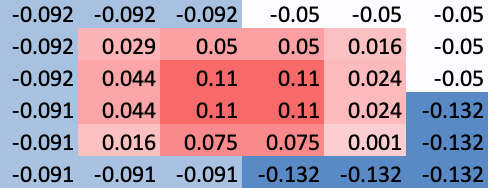The Sac Fly Paradox: How to Hit Them and How to Prevent Them
Photo Credit: Getty Images
While looking at the nearly 1200 sac flies hit in 2023, I noticed an interesting paradox: The average sacrifice fly reduced the offensive team’s expected runs scored in the inning by 0.284 runs. At the same time, it increased the offensive team’s win probability by 1%.
Sac flies are a perfect example of situational hitting in baseball: while they might hurt the offense when trailing by multiple runs in the late innings, they can become invaluable in tied games, one-run contests late in the game, or when the offense is holding a lead. In these situations, sac flies serve as a great way to elevate the batting team's win probability.
In this analysis I’ll break down the characteristics of pitches that batters should look for when aiming to hit a sac fly, and the characteristics of pitches that pitchers and catchers should avoid when trying to prevent a sac fly.
Pitch Type
As illustrated in Table 1, sliders have the highest sac fly premium of 1.6%, meaning that the percentage of sac flies hit off of sliders was 1.6% higher than the percentage of total pitches that were sliders. Furthermore, 4-seamers, sinkers, and curveballs have the lowest sac fly premiums, each of -0.8%. Cutters and changeups also have positive sac fly premiums of 0.7% and 0.3%, respectively. Splitters and knuckle curves have negative sac fly premiums of -0.5% and -0.4%, respectively.
Table 1: 2023 sac fly pitch type breakdown, league average pitch type breakdown, and sac fly pitch type premium
Pitch Location
Pitches that are thrown at 96 mph and faster, and pitches thrown at 81 mph and slower, exhibit on average negative sac fly premiums, as seen from Table 2. On the other hand, Pitches between 82 mph and 95 mph have a positive sac fly premium, on average.
The pitch velocity breakdown is consistent with the pitch type breakdown, as both high velocity 4-seamers and sinkers, and low velocity curveballs and knuckle curves are more difficult to hit for sac flies. However, middling velocity sliders, cutters, and changeups are easier to hit for sac flies.
Table 2: 2023 sac fly premium broken down by pitch velocity
Pitch Movement
Pitches exhibiting league average horizontal movement along with either league's average or less than league average vertical drop tend to yield the highest sac fly premiums. Conversely, pitches with greater-than-expected arm-side horizontal movement (such as running 4-seamers, sinkers, and backup sliders), as well as pitches displaying greater-than-expected vertical drop, pose more difficulty to hit for sac flies.
Table 3: 2023 sac fly premium broken down by pitch movement. Movement is measured in inches, relative to the average movement of the same pitch type
Pitch Location and Platoon Advantage
RHP vs. RHB
RHP vs. LHB
LHP vs. RHB
LHP vs. LHB
Figure 1: 2023 sac fly premium broken down by batter/pitcher handedness and pitch location. Middle 16 rectangles represent the strike zone, from the catcher’s perspective.
In a right-handed pitcher versus right-handed batter matchup, the sac fly premium remains positive across the entire strike zone. To consistently prevent a sac fly, the pitcher must induce the batter to swing at pitches up and in or down and away, outside of the zone.
Similarly, in the right-handed pitcher versus left-handed batter scenario, the sac fly premium remains positive across the strike zone. To prevent a sac fly, the pitcher needs to lure the batter into swinging at pitches up and away, down and away, or down and in, outside of the zone.
However, when a left-handed pitcher faces a right-handed batter, an opening emerges in the strike zone. Pitchers can aim up and away within the strike zone to prevent a sac fly, in addition to enticing the batter to chase pitches down and in, outside of the strike zone.
The most challenging scenario for a hitter to produce a sac fly occurs in the left-handed pitcher versus left-handed batter matchup. Here, the pitcher can target two areas within the strike zone—middle in and down and away. Furthermore, the pitcher can coax the batter to chase pitches down and away, out of the zone.
Conclusion
In a game situation in which the offense benefits from hitting a sac fly, the pitcher should favor 4-seamers, sinkers, and curveballs while largely avoiding throwing sliders and cutters.
The pitcher should favor pitches at or above 96 mph and pitches at or below 81 mph, largely avoiding pitches between 82 and 95 mph.
The pitcher should also favor pitches with greater-than-expected arm side horizontal movement and greater-than-expected vertical drop.
The pitching team should strongly consider bringing in a LHP to face a LHB.
The batter’s plate discipline is paramount, as he has a high likelihood of delivering the sac fly if he does not chase outside of the strike zone.







